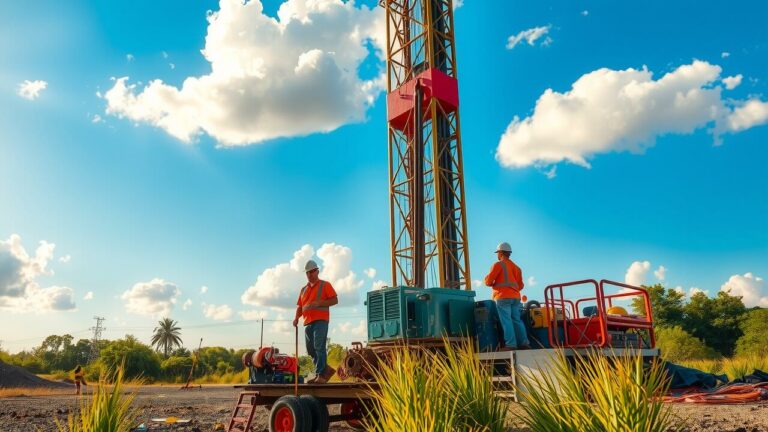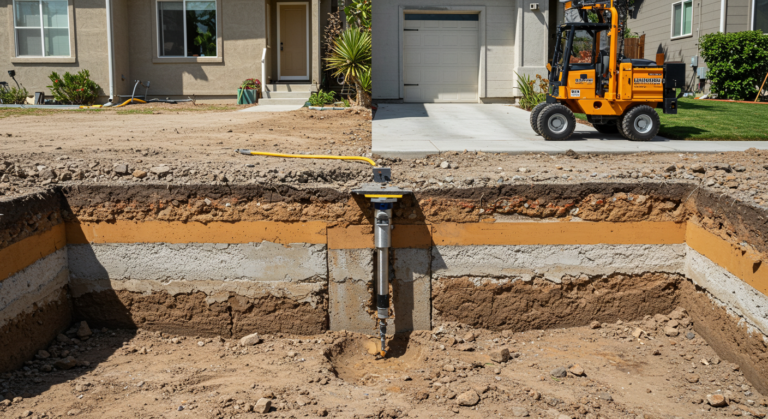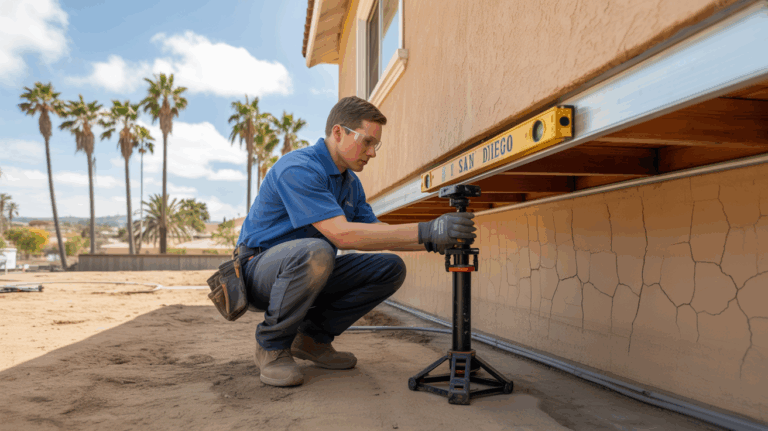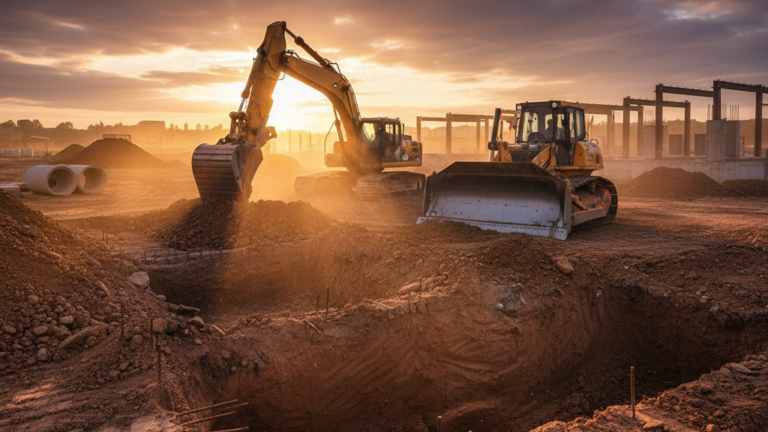When we think about the cause of landslides, images of sudden earth movements, destruction, and the sheer power of nature often come to mind. As an expert in the field of drilling and geotechnical engineering, I aim to provide you with a comprehensive understanding of what triggers these natural events, how they develop, and why certain areas are more prone to landslides than others. Let’s delve into the key causes of landslides, explore some real-life examples, and discuss the preventive measures that can mitigate their impacts.
What is a Landslide?
Before we jump into the cause of landslides, it’s essential to understand what a landslide is. Simply put, a landslide is the movement of rock, earth, or debris down a slope. This movement can be gradual or sudden and is influenced by a variety of factors that we will explore in this article.
Primary Causes of Landslides
Landslides can occur due to several natural and human-induced factors. Understanding these causes can help us identify risk areas and implement preventive strategies. Below, we will examine the primary causes of landslides in detail.
Natural Causes of Landslides
- Heavy Rainfall and Water SaturationOne of the most common natural causes of landslides is heavy rainfall. When a slope becomes saturated with water, the soil loses its stability, making it more prone to sliding. This process, known as water infiltration, reduces the friction between particles in the soil, leading to a loss of cohesion. The result? A slope that can no longer hold its ground and gives way to a landslide.
- Earthquakes and Seismic Activity Earthquakes are another significant cause of landslides. The shaking of the ground during an earthquake can destabilize slopes, causing them to collapse. In seismically active regions, even small tremors can trigger landslides, especially in areas where other factors have already weakened the ground.
- Volcanic ActivityVolcanic eruptions can also lead to landslides. The combination of volcanic debris and the force of an eruption can cause large amounts of earth to move rapidly. These volcanic landslides, or lahars, are particularly dangerous because they often involve a mix of water, rock, and ash, which can travel at high speeds and cover great distances.
- Erosion and Weathering Over time, erosion and weathering can weaken the structural integrity of a slope. Factors such as wind, water flow, and temperature changes contribute to the gradual breakdown of rock and soil. As these materials erode, the slope becomes more susceptible to failure, leading to landslides.
Human-Induced Causes of Landslides
- Deforestation and Land Use ChangesHuman activities, such as deforestation and changes in land use, can significantly increase the risk of landslides. Trees and vegetation play a crucial role in stabilizing soil with their root systems. When these are removed, the soil becomes loose and more likely to slide. Construction projects that alter the natural landscape can also contribute to this problem.
- Mining and Quarrying ActivitiesMining and quarrying operations involve the removal of large volumes of earth, which can destabilize slopes and lead to landslides. The vibrations from blasting and the removal of support structures like rocks and soil layers contribute to the instability of these areas.
- Improper Drainage Systems Poorly designed or maintained drainage systems can exacerbate the risk of landslides. When water is not adequately managed, it can accumulate and saturate the soil, weakening it and increasing the likelihood of a landslide. Effective water management is critical in preventing these events, especially in regions prone to heavy rainfall.
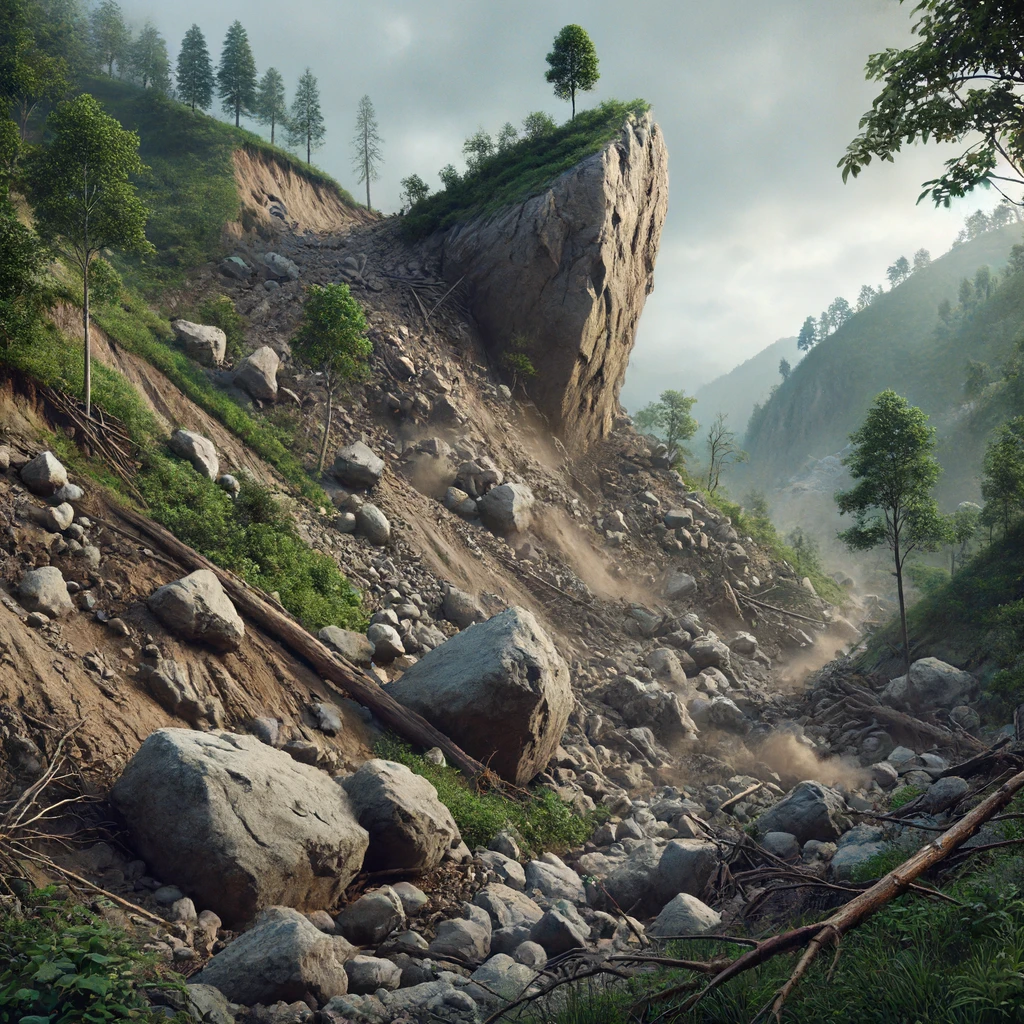
Case Studies: Real-World Examples of Landslides
To better understand the cause of landslides, let’s look at some notable examples that illustrate how these factors come into play.
The 2014 Oso Landslide, Washington, USA
In March 2014, a devastating landslide occurred near Oso, Washington. This event was triggered by a combination of heavy rainfall and ground saturation. The saturated slope failed, resulting in a massive slide that destroyed homes and claimed the lives of 43 people. The Oso landslide highlights the critical role of water saturation in causing landslides.
The 1999 Vargas Tragedy, Venezuela
The Vargas tragedy in 1999 was a catastrophic event where intense rainfall caused widespread landslides and flooding along the coast of Venezuela. This natural disaster, compounded by poor land management and deforestation, resulted in the loss of thousands of lives and extensive damage to infrastructure. It serves as a stark reminder of how human activities can exacerbate natural causes of landslides.
The 2018 Hokkaido Eastern Iburi Earthquake, Japan
Triggered by a powerful earthquake, the 2018 landslide in Hokkaido, Japan, caused significant destruction. The earthquake-induced landslides buried houses and led to numerous fatalities. This incident underscores the impact of seismic activity on slope stability.
Preventive Measures and Risk Mitigation
While we cannot prevent all causes of landslides, there are several strategies we can employ to mitigate the risks and reduce the impact of these natural events.
Proper Land Use Planning
Effective land use planning is crucial in managing landslide risks. Identifying areas prone to landslides and restricting construction and development in these zones can significantly reduce the likelihood of property damage and loss of life. Authorities must enforce strict zoning regulations to ensure that vulnerable areas are protected.
Vegetation and Reforestation
Maintaining and restoring vegetation on slopes is a natural and effective way to stabilize soil. Planting trees and shrubs helps bind the soil together, reducing erosion and improving slope stability. Reforestation efforts can be particularly beneficial in areas where deforestation has increased landslide risks.
Slope Reinforcement Techniques
In areas where landslides are a persistent threat, slope reinforcement techniques can provide added stability. Methods such as retaining walls, rock bolts, and soil nailing can help support and stabilize slopes, preventing them from failing. These engineering solutions are often used in conjunction with other preventive measures.
Improving Drainage Systems
Ensuring that drainage systems are well-designed and properly maintained is essential in preventing landslides. Effective drainage reduces water accumulation and soil saturation, thereby maintaining slope stability. Regular inspection and maintenance of these systems are critical in regions prone to heavy rainfall.
Monitoring and Early Warning Systems
Implementing monitoring and early warning systems can provide valuable time for evacuation and risk reduction measures. Technologies such as ground sensors, satellite imagery, and weather forecasting can help detect early signs of slope instability and predict potential landslides.
Conclusion: A Proactive Approach to Landslide Management
Understanding the cause of landslides is the first step toward effective risk management and prevention. By recognizing the natural and human-induced factors that contribute to these events, we can take proactive measures to protect lives and property. Whether through proper land use planning, reforestation, or engineering solutions, there are numerous ways to mitigate the risks associated with landslides. As we continue to develop and expand into new areas, maintaining a balance between human activities and the natural environment is crucial to preventing these destructive events.
At Unlimited Drilling, we are committed to providing expert guidance and solutions to help manage and reduce the risks associated with landslides. Our team of professionals is here to assist you with comprehensive site assessments, slope stabilization techniques, and customized risk management strategies.
If you have concerns about landslide risks on your property or need professional advice, contact Unlimited Drilling today. We are here to help you navigate the challenges of slope stability and ensure the safety and integrity of your land.

